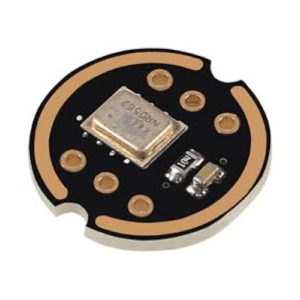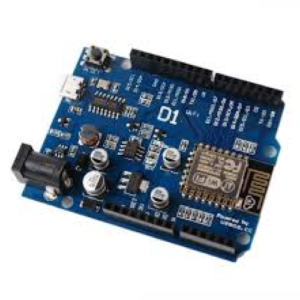RS-485 MODBUS Serial to Ethernet Converter
₹9,286.00
Ambetronics is leading manufacturer of RS-485 to Ethernet Converter. ERS-485 devices are ideal for applications and devices that require an efficient way of communicating with serial RS-485 devices over an Ethernet network.The ERS-485 is an economical Modbus-to-Ethernet converter that can quickly and easily be added to any device with a RS-485 serial port, making that device Web-enabled. It is a single port serial server, that converts a serial port to an Ethernet Port, thus removing cable length limitations, and allowing for “serial tunneling” of a device through an Ethernet or TCP/IP.
Converting Data From RS-485 To Ethernet:
RS-485 data sent and received on serial ports on the ERS-485 converter are encapsulated in Ethernet packets in a manner that best fits the type of data being transported.
ERS-485 converter (commonly referred to as Terminal Servers or Device Servers) connect RS-485 based equipment across an Ethernet network enabling you to do following things such as:
- Cable replacement using RS-485 to Ethernet:
- Have virtual COM ports connect PC/servers to remote RS-485 devices over Ethernet
- Communicate to multiple RS-485 devices at the same time across a network
- Use ERS-485 Converter to connect Serial PLCs to Ethernet
- Connect serial equipment over Ethernet with ERS-485 Converter
- Modbus RTU to Modbus over TCP/IP or Modbus TCP/IP
Features:
- LED Indication
- Low Cost
- 10/100Mbps Ethernet
- TCP/UDP/Telnet Modes
- DHCP/Static IP Modes
- Web Based Configuration
- Low Power
Technical Specifications:
- Protocols: Support TCP, UDP, DHCP ,HT TP Server-Client, TELNET, Modbus TCP
- Speed: 10/100Mbps
- Working: Half Duplex
- Configuration: In-built HT TP Web Server
- Working mode: Support Server and Client
- Transmission: 100 meter
- Connector: RJ45
Serial interface:
- Parity bit : None, Even, Odd, Space, Mark
- Data bit : 5bit, 6bit, 7bit, 8bit
- Baud rate : 600bps to 460800 bps
- Flow control : RTS/CTS or XON/XOFF or No flow control
- Interface protection : 2KV static protection
- Interface type : RS-485 (D+, D-, SH)
Power Supply:
- Power input : 9VDC, 1A
- Consumption : ~1.5W
- 1 DC jack for power connections
Environment:
- Working temperature : -20°C to 55°C
- Storage temperature : -20°C to 60°C
- Relative humidity : 5% to 95% RH, Non-condensing
Appearance:
- Compact Size : 78 mm (L) x 41mm (W) x 24mm (H)
- Material : ABS Plastic
- Weight : ~ 100g
1. Virtual COM ports:COM ports have long provided a convenient way for PCs and embedded systems to exchange information. The traditional COM port on a PC is an RS-232 serial port on a motherboard or expansion card. Recent PCs often skip RS-232 in favor of USB. But with the right firmware, a USB device can appear as a virtual COM port that applications can access using COM-port APIs or libraries.A USB virtual COM port is a software interface that enables applications to access a USB device as if it were a built-in serial port. Many USB virtual COM-port devices function as bridges that convert between USB and RS-232 or other asynchronous serial interfaces.But a virtual COM port doesn’t have to have a serial interface at all. Some virtual COM-port devices convert between USB and a parallel interface. Or a device might just read and store sensor data from an on-chip analog port and send the data to a PC via USB.2. Serial Tunneling:Serial Tunneling enables you to establish a link across Ethernet to a serial port on another Serial Device Server. The serial data is packetized in both directions into Ethernet TCP/IP packets. This packetizing allows a user to connect a Serial Device Server to an existing serial device and have the communications go over Ethernet to another device without any changes to critical network applications.Let’s look at an example. One Serial Device Server can be connected to the serial port of a computer running a critical application in a central office or datacenter. The second Serial Device Server will be connected to the serial port on a Data Acquisition device located across town. When each Serial Device Server has a LAN connection and power is applied, communications between the two dedicated Device Servers automatically start a session.Simply put, once the two Serial Device Servers are used in Serial Tunneling mode, they automatically transfer serial data across the LAN as if it was transparent. The application on the central computer only opens the COM port and sends data out.The fact that the Serial Tunneling feature makes the LAN transparent make additional applications feasible. A card reader can send data to a display, or a positioning camera can send information to a controller on a manufacturing line.







Reviews
There are no reviews yet.